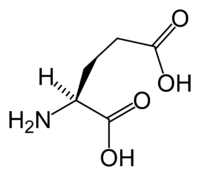
Photo from wikipedia
β-adrenoceptor (β-AR), especially the β1- and β2-AR subtypes, is known to participate in stress-related behavioral changes. Recently, SR58611A, a brain-penetrant β3-AR agonist, exhibits anxiolytic- and antidepressant-like effects. In this study,… Click to show full abstract
β-adrenoceptor (β-AR), especially the β1- and β2-AR subtypes, is known to participate in stress-related behavioral changes. Recently, SR58611A, a brain-penetrant β3-AR agonist, exhibits anxiolytic- and antidepressant-like effects. In this study, we sought to study the role of SR58611A in behavioral changes and its potential cellular and molecular mechanism in the prefrontal cortex (PFC). We found that rats with SR58611A (1 mg/kg) enhanced PFC-mediated recognition memory, whereas administration of higher dosage of SR58611A (20 mg/kg) caused hyperlocomotion, and exhibited an impairment effect on recognition memory. Electrophysiological data also indicated that SR58611A (1 mg/kg) selectively enhanced NMDA receptor-mediated excitatory postsynaptic currents (EPSC) through interacting with norepinephrine (NE) system and activating β3-AR, whereas higher dosage of SR58611A (20 mg/kg) reduced both AMPA receptor- and NMDA receptor-mediated EPSC. SR58611A-induced different effects on EPSC linked with the change of the surface expression quantity of NMDA receptor and/or AMPA receptor subunits. Synaptosomal-associated protein 25 (SNAP-25), which is a key soluble N-ethylmaleimide-sensitive factor attachment protein receptor (SNARE) protein involved in incorporation of NMDA receptor to postsynaptic membrane, contributed to SR58611A (1 mg/kg)-induced enhancement of recognition memory and NMDA receptor function. Moreover, SR58611A (1 mg/kg) could rescue repeated stress-induced defect of both recognition memory and NMDA receptor function through a SNAP-25-dependent mechanism. These results provide a potential mechanism underlying the cognitive-enhancing effects of SR58611A (1 mg/kg).
Journal Title: Behavioural Brain Research
Year Published: 2021
Link to full text (if available)
Share on Social Media: Sign Up to like & get
recommendations!